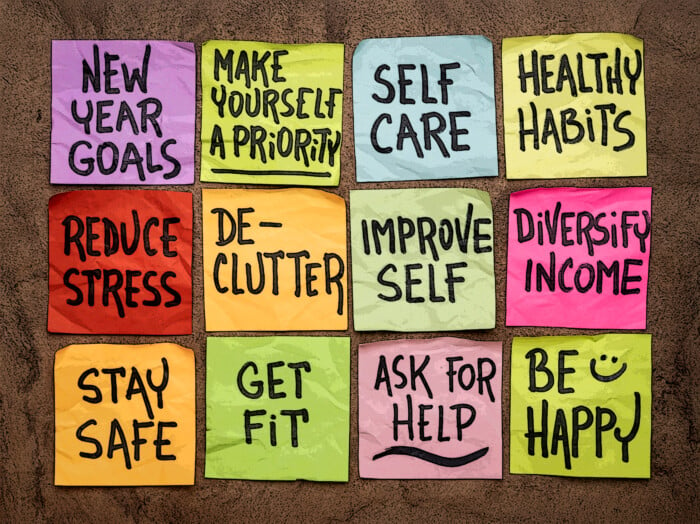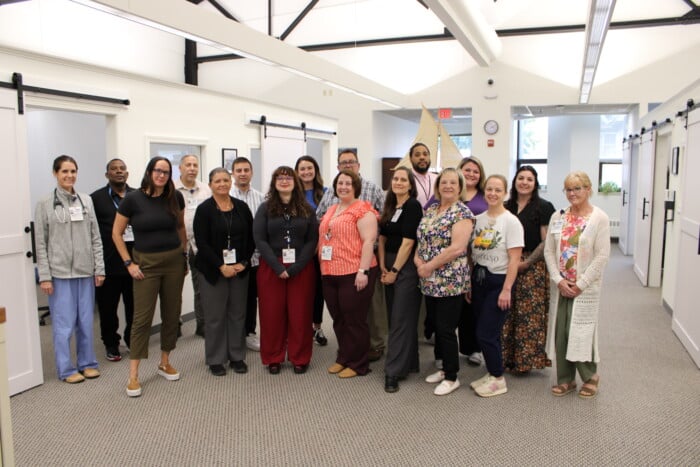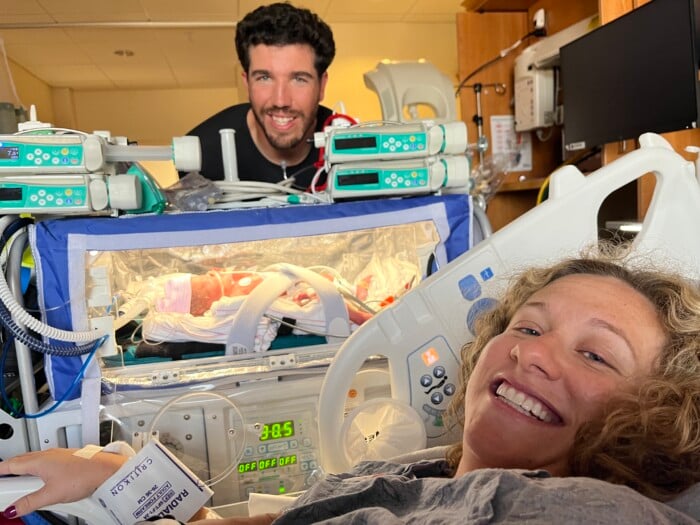Healthwise: Rethinking Resolutions
Why reaching your goal requires more than willpower

Every January, we promise ourselves that this will be the year we stick to our resolutions. We buy new sneakers, join a gym and put time limits on our favorite phone apps.
But by Valentine’s Day, many of us are back to scrolling our phones and hibernating on the couch. Why does this happen, and what can we do to break the cycle?
Local health care providers say our lack of motivation isn’t necessarily the reason we slide back to familiar habits. Humans may expect overnight transformation, but the brain takes a little bit longer to adjust.
Before You Begin: Get in the Right Headspace
January may be the first month of the year, but it may not be the best time to change your routine. Dr. William Charmak, chair of behavioral health for the Foundation Medical Partners at Southern New Hampshire Medical Center, believes the timing of our resolutions is flawed.
“Sometimes the holidays are difficult for people, particularly if they are dealing with family or lack of family, and you may not be feeling your best at that point in time,” he says. “To put yourself through a period of change might be more stressful than it should be.”
Charmak, who oversees psychiatry and psychology providers who work with bariatric patients and patients with substance misuse disorders, emphasizes that any major behavior change requires energy and emotional readiness.
“If I’m struggling with depression, anxiety and I don’t feel good about myself, starting a behavior-change program at that point is not a good idea,” he says. “I want to make sure that someone’s self-esteem is good enough. There’s also something called self-efficacy — which means that ‘I can do this, that I have belief in myself’ (mindset). If you don’t get that mindset, you’re going to fail.”
The Power of Small Steps
While most people start January with high hopes, you have a better likelihood of achieving big goals by taking small, repeatable actions, according to Sarah Gagnon, LICSW, vice president of clinical operations at Riverbend Community Mental Health in Concord. She advises that people start by engaging in “micro” goals, or small healthy habits they can build upon.
“The easiest resolutions for someone to make are changes that you have already started to make or have tried to make before,” she says. “If you haven’t tried the change before, start with a small micro resolution. Remember that any size change or any effort you make can be meaningful and create a foundation for lifelong impacts.”
Dr. Elizabeth Lynch, founder of North Star Private Physician Care in Exeter, echoes that approach. Lynch tells her patients to think of making a new habit as automatic as brushing their teeth. For example, if you want to exercise daily, it’s important to take that walk even if you don’t particularly feel like it.
“Changing a behavior is a repetitive, slow process to change the brainwave circuitry in terms of how you approach and how you think of things, she says. “Whatever it is that you pick — do it every day. If you do it every day, you’re going to get most days in.”
Why Resolutions Fail
Patients often fall into the “all-or-nothing” trap because they view resolutions as temporary. When people view change as a short-term challenge followed by a reward, they can expect to relapse, Charmak says. With his patients, he likes to follow the trans-
theoretical model of change, a research- backed framework that describes six stages of change — pre-contemplation, contem-
plation, preparation, action, maintenance and relapse.
“In the pre-contemplation stage, people ask ‘Is it worth it for me?’ In the contemplation stage, people ask, ‘How am I going to get this done?’ It’s during the preparation stage that someone researches how they might quit smoking, for example,” he says. “They might ask: ‘Do I need a smoking cessation class? Should I see a doctor and ask if there’s medication that can help?’ ”
The action stage is where people actually start to change their behavior. However, when we make resolutions, we often skip the earlier stages and act right away.
“People think they can just jump into the deep end and learn how to swim, but that doesn’t work,” he says. “You need to prepare and build maintenance into your plan.”
And yes, relapse does and will happen. But Charmak says that is part of the process. It doesn’t mean you should give up on your goal or that you are a failure.
“We get tired, we get distracted, and we get stressed,” he says. “There are lots of things pulling at our attention, and we’re not on guard and can’t be on guard all of the time,” he says. “The brain specifically wants comfort, so we repeat patterns — not because they are good or bad — but because they’re comfortable and familiar to us.”
Support Systems and Accountability
The most highly motivated people benefit from external support from friends, a partner, a coach or their health care provider.
As a direct primary care provider, Lynch treats patients who subscribe to a membership model that allows them to access her
via text, email or telehealth visits in addition to office visits.
Previously, when she worked in pulmonary critical care, and later in outpatient pulmonology and sleep medicine, she encountered patients looking for primary care providers who could help them better navigate their health concerns.
Many people need professional guidance if they’re looking to tackle tough habits — like smoking or drinking, she says. The benefit of working with a health care provider is that they can order lab work, suggest evidence-based behavioral practices and prescribe medications, if needed.
When working with patients determined to quit smoking, Lynch has incorporated some unconventional strategies to help them taper off and retrain their brains. She adds that smoking is addictive, and many people need to move slowly and change the sights, the smells and the sounds that trigger cravings.
“I tell them to take the cigarettes out of the box, put them in a Ziploc bag, and decrease the bag by one cigarette per week. Put the rest (of them) outside and hide them in a tree somewhere. Over time, you start associating different thoughts and activities with that craving,” she says.
Realistic Resolutions and Age-Appropriate Goals
While it may be your dream to run the Boston Marathon in April, it’s important to be realistic about your resolutions. Lynch points out that adults are not immune to peer pressure — particularly regarding their choices about food, alcohol and exercise. You still may encounter well-meaning friends who want to offer you a cocktail or spend time with you at the local pub instead of the park.
“One of the things we should say is, ‘I’ve decided to do this, and it would be great if you would support my choice,’ ” she says.
Lynch also suggests picking activities that are conducive for where you are in life. Bootcamp classes may have helped your best friend shed pounds, but they may not be realistic for someone with knee or hip injuries. Choosing walking, swimming or cycling may be your best bet.
Forgiveness, Flexibility and a Fresh Start
Ultimately, all three health-care providers agree that the best resolution may simply be to be kinder to yourself as you navigate change.
“Everyone should make a resolution to be a better version of themselves,” Gagnon says. “Whether that means spending more time outside, putting the phone down earlier at night, or being kinder to yourself, any commitment to change for the positive will be impactful.”
Charmak encourages patients to build a plan for what they’ll do when they “fail,” whether that means calling an accounta-
bility partner or their doctor. The most important part of getting back on track is self-forgiveness, he says.
“Be rational with yourself and say, ‘I need to recover. I need to get back on track and begin again,’ ” he says.
And Lynch, who is accepting new patients, reminds people they shouldn’t be afraid to seek help as part of their fresh start.
“If patients are interested in working on preventative care or wellness, we’ll work on that,” she says. “For people who are interested in taking an active role in their care, direct primary care is a great option.”













